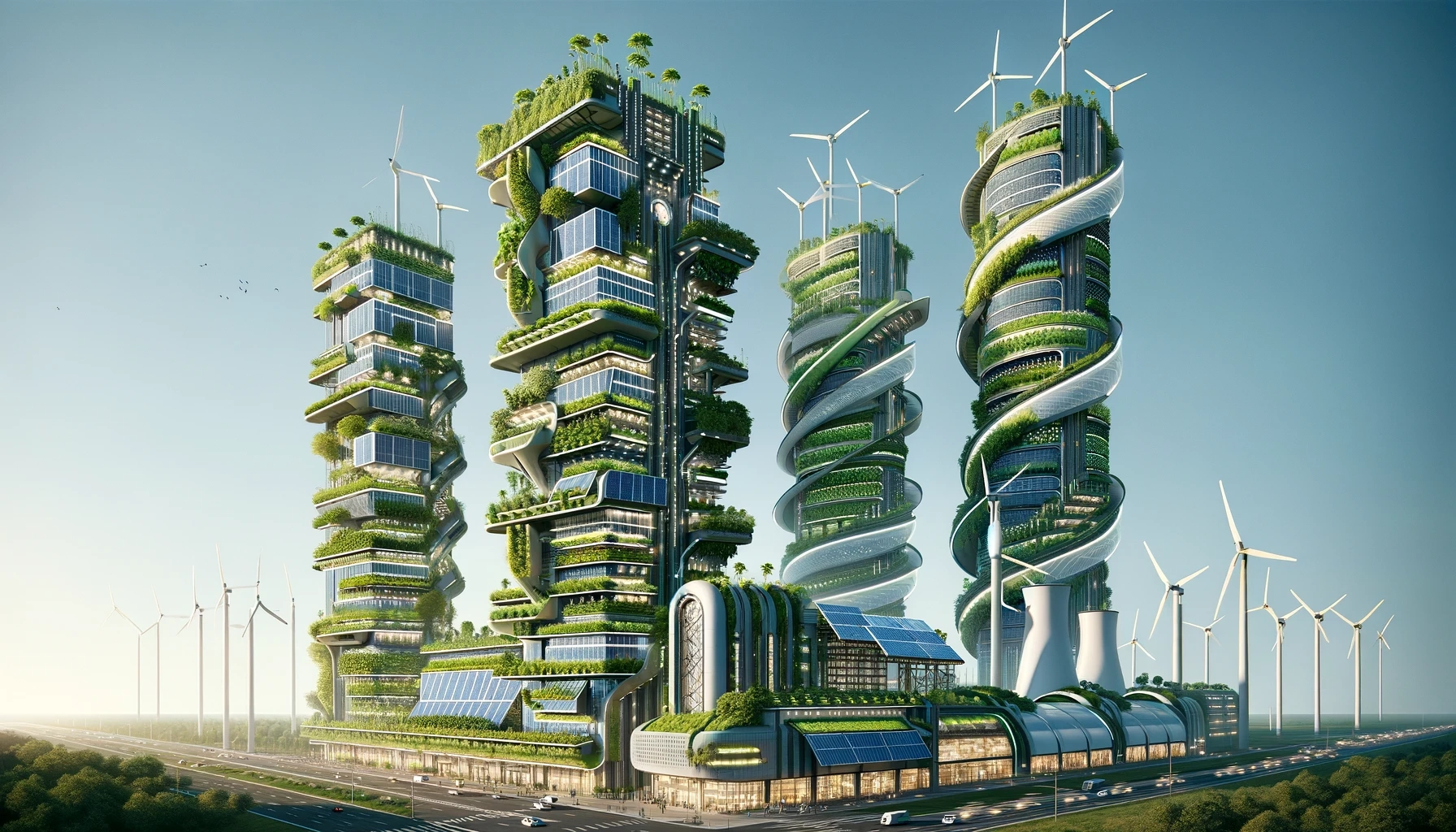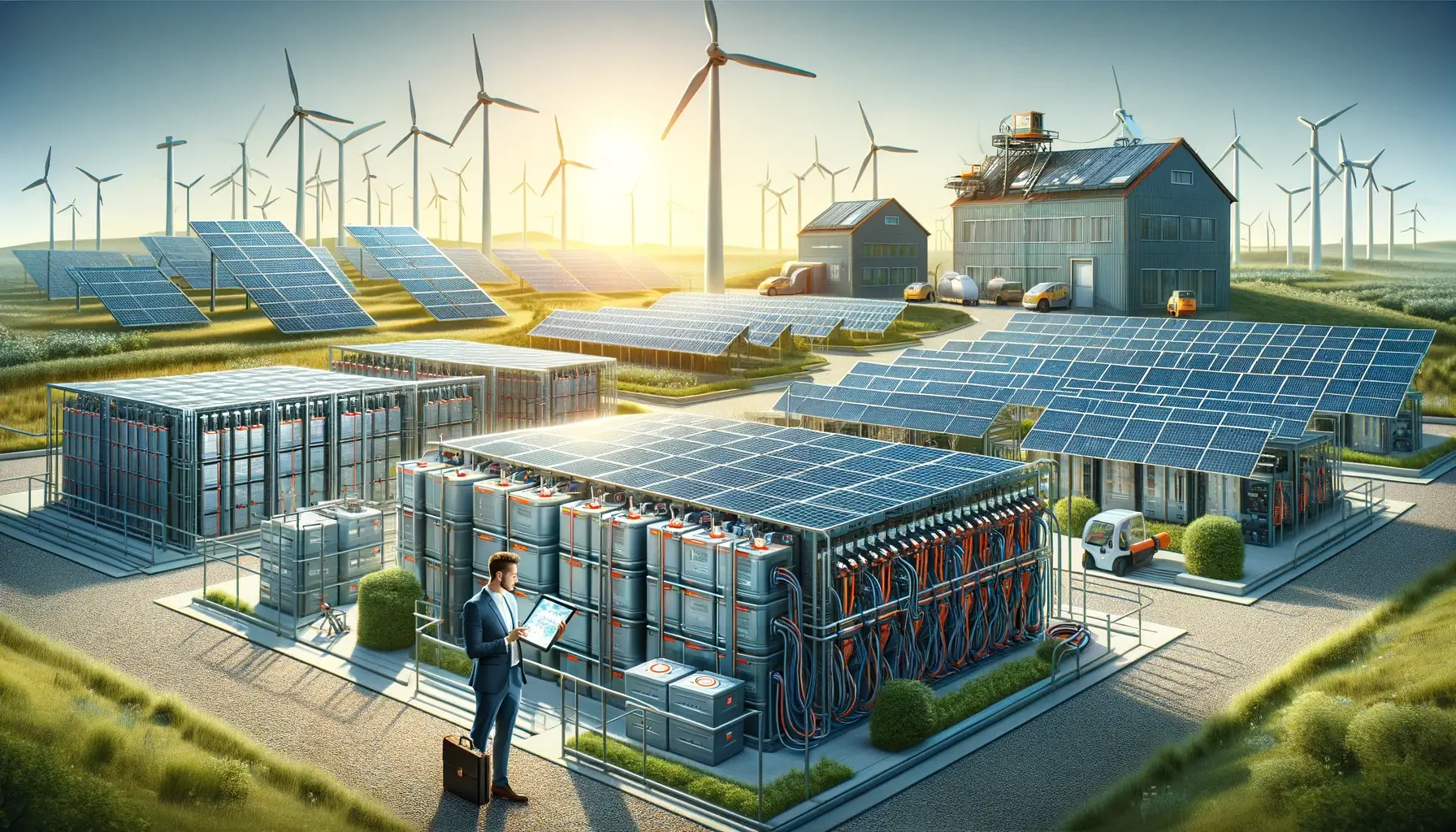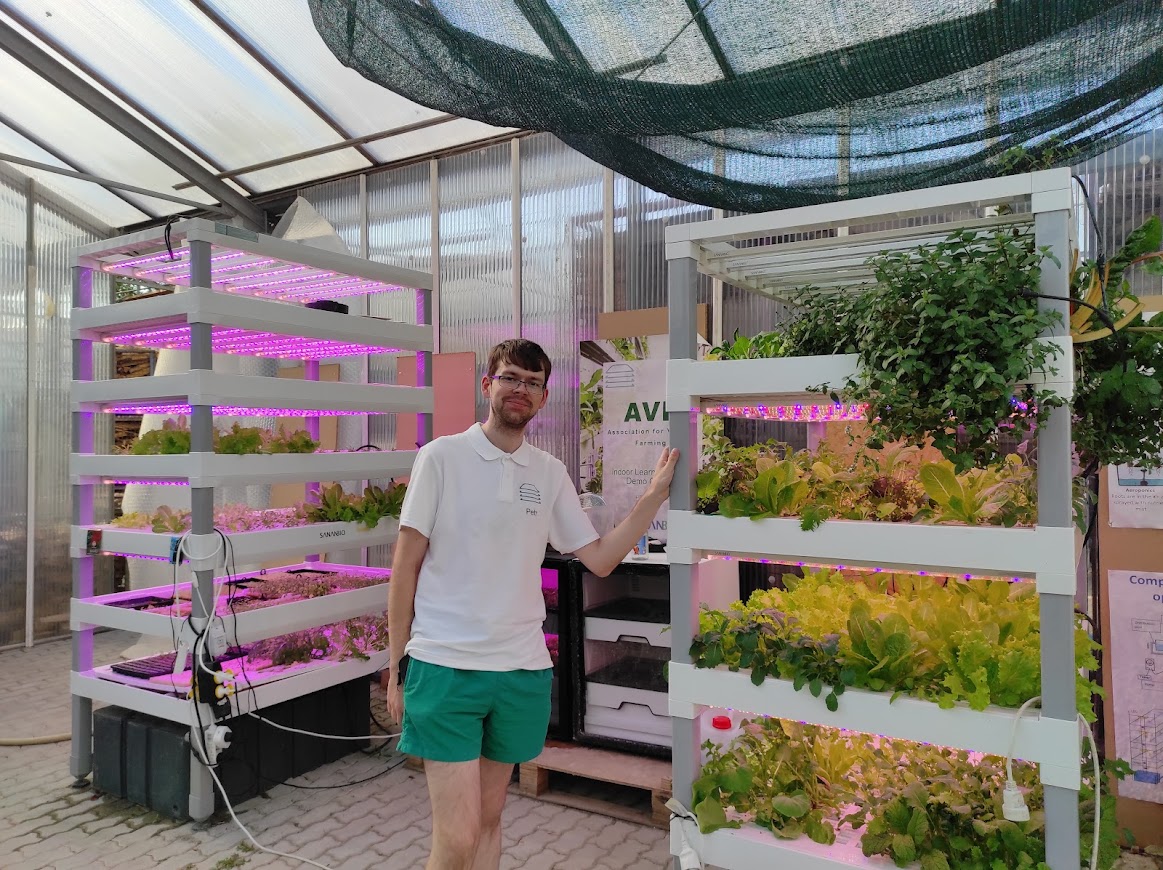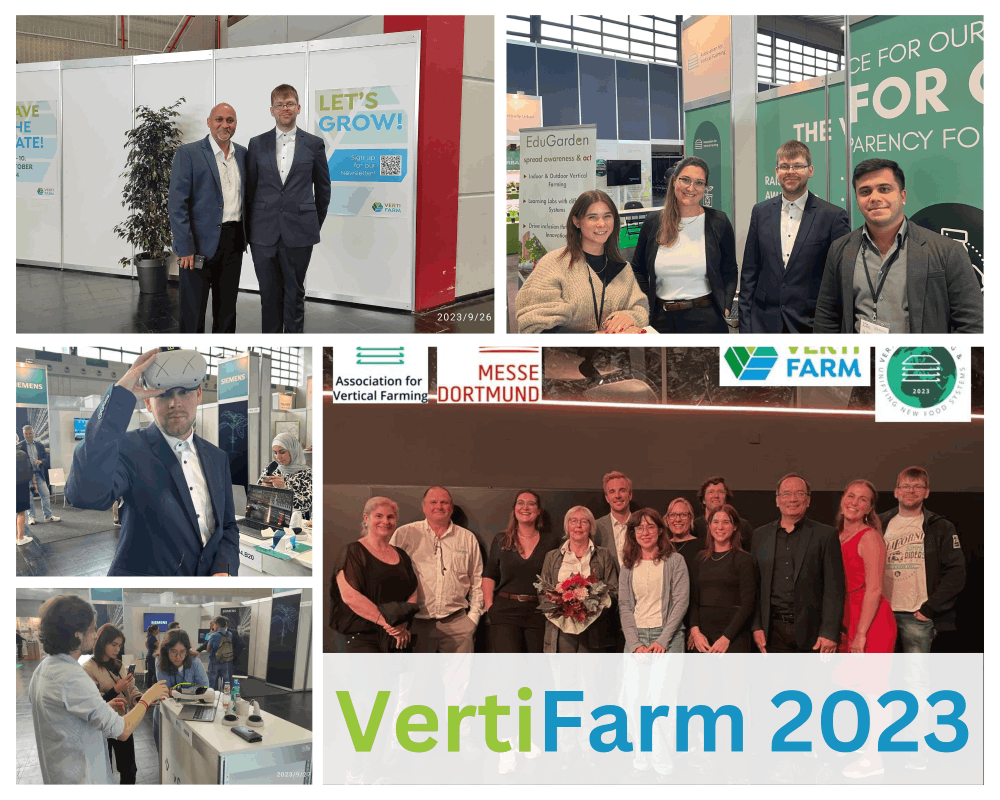Vertical farming and power consumption is actually one of the most important topics in the industry, but it is usually given little attention or glossed over with buzz words, at least it seems to me that people prefer not to throw out the hard numbers. As a trained electronics engineer, however, I know that the reality is different and not necessarily so great when you look at the energy requirements.
I wanted to cover other topics on my blog and what could be more obvious than Vertical Farming, an industry I also work in.
Time and again, the topic of energy consumption comes up in online discussions and comments, and there's nothing to sugarcoat: Yes, LEDs need power and you need a lot of power.
Because what we save in agriculture and the closed cultivation system in the vertical stack of racks, we consume again. Because in the horizontal you can use the sunlight, but in a stack, you need LEDs, because the light can not shine through, actually logical 🤷♂️.
Now most of the time people don't care much about how much electricity is consumed and that's not a criticism of the industry now nor of the consumer, I mean who cares if the salad you bought was transported by a car that has an electric motor or an internal combustion engine?
In the industry, people always like to talk about the fact that you can run the farms with renewable energies and that sounds romanticized also nice and comfortable, but the reality is a different one. Therefore, I have developed a saying:
If you are planning a vertical farm, then plan a power plant as well
Because a vertical farm is not a farm, but a high-tech facility that must produce effectively and efficiently. Backyard experiments are just not that.
And so you need a lot of electricity, and depending on the country, there is a more or less hefty electricity bill at the end of the month.
But I'm also honest, I'm also tired after a long day doing all the calculations and have tasked ChatGPT3.5 to do it, of course I've set a few parameters and checked the formulas for logical integrity.
An example calculation for a vertical farm producing 100 kg of lettuce per month:
To calculate the power requirements for Vertical Farm lighting, we need to consider the following information:
- The size of the cultivation area: 50 sqm (cultivation area on several levels, not the base area).
- The productivity of the farm: 2 kg of lettuce per square meter per month (Is easier to calculate).
- The monthly harvest: 100 kg of lettuce
Assuming the lighting requires an average power of 100 watts per square meter (this is a typical power for industrial LED plant lamps), we can calculate the total power of the lighting as follows:
Total lighting power = cultivation area x power per square meter
Total lighting power = 50 sqm x 100 watts/sqm
Total lighting power = 5000 watts
Since power is measured in watts, we need to convert this to kilowatts (kW) to calculate power consumption in kilowatt-hours (kWh) (One request I have as an electronics engineer, and this goes to the marketing people and journalists as well, differentiate between kW and kWh). We can do this by dividing the total lighting power by 1000:
Total lighting power in kW = Total power of lighting / 1000
Total lighting power in kW = 5000 watt / 1000
Total lighting power in kW = 5.0 kW
To calculate the monthly power consumption for lighting, we multiply the total power of the lighting in kW by the number of operating hours per month. Assuming the lighting is operated 12 hours per day (which is a typical duration for LED plant lamp operation, but also depends on plant growth cycle and plant variety), the number of operating hours per month is 30 days x 12 hours per day = 360 hours per month:
Monthly electricity consumption for lighting = Total lighting power in kW x operating hours per month
Monthly electricity consumption for lighting = 5.0 kW x 360 hours per month,
Monthly electricity consumption for lighting = 1800 kWh
Therefore the vertical farm producing 100 kg of lettuce requires about 1800 kWh per month for lighting. Please note that this is only a rough estimate (lighting duration depends on various parameters) and the actual power of the lighting and other factors such as the air conditioning of the farm must be taken into account to make a more accurate calculation. We will not go into this here as it varies from farm to farm.
Now we want an off-grid supply for this vertical farm, off-grid means that one covers the consumption separated from the grid by own energy production. Realistically, this makes little sense, but as a hypothetical example, how a vertical farm does not cause further CO2 in production through the electricity mix.
To calculate how many photovoltaic modules (Assuming Central Europe, with enough sun and low heating demand, Northern Europe would not be feasible here again, maybe I'll do separate posts on this) and how much area is needed to generate enough electricity for the Vertical Farm, we first need to calculate the electricity demand of the farm.
Assuming the farm uses a total of 1800 kWh per month for lighting (as calculated in the previous question), the daily electricity demand is:
Daily power demand = Monthly electricity demand / 30 days
Daily power demand = 1800 kWh / 30 days
Daily electricity demand = 60 kWh per day
To meet this electricity demand, we need a photovoltaic system with sufficient power. Suppose we choose a monocrystalline photovoltaic module with an output of 400 watts (affiliate link), then we need a total of:
Required number of modules = Daily power demand / Power per module
Required number of modules = 60 kWh per day / (0.4 kW x 5.5h per module = 2.2kWh per 5.5h) (Assumption 1 photovoltaic module has 400 Wp power and 5.47 sunshine hours per day in Germany based on 2000 sunshine hours per year)
Required number of modules = 27.27 ~ 28 modules
This means that we need a total of 28 photovoltaic modules to generate enough electricity for the Vertical Farm, just to cover the 12 hours of electricity needed for lighting. However, the actual number of modules may vary depending on location, orientation, tilt angle and other factors.
To calculate the required area for the photovoltaic modules, we need to know the average area per module. Assuming a typical monocrystalline photovoltaic module has an area of 1.67 m², we need a total of:
Required area = number of modules x area per module
Required area = 28 modules x 1.67 m² per module
Required area = 46.76 m²
This means that we need an area of about 46.76 m² to install the photovoltaic modules. Please note that this is only a rough estimate and the actual area may vary depending on the module size and type and other factors.
And now we come to the memory, actually one should calculate it the other way round, first the Determine the demand, then select the storage and then schedule the solar modules. Because the number of solar panels, depends on the need and the battery.
To store and use excess energy when the sun is not shining, we need an energy storage device, such as a battery. The required battery capacity depends on several factors, such as the size of the photovoltaic system, the farm's electricity needs, and the desired autonomy time (i.e., the time the farm can go without sunlight).
Assuming we want to achieve an autonomy time of 5 days and the daily power demand is 60 kWh, as battery we use a lithium battery. Since the battery should only be discharged to a maximum of 20%, we calculate with a factor of 1.2, which corresponds to 120%, so since we only want to use "100%", but do not want to use 20% of the battery, we must calculate with 120%.
Then we need a battery capacity of about:
Required battery capacity = Daily power requirement x autonomy time
Required battery capacity = 60 kWh per day x 5 days
Required battery capacity = 300 kWh
Required battery capacity = 300 kWh x 1.2
Required battery capacity = 360 kWh
But now there is a problem, because the battery was calculated on the basis of the power demand, but this battery must also be recharged, that is, can our selection of solar modules?
Based on the calculation, no, because the photovoltaic panels cover only the daily demand of 60 kWh.
Now it depends on how fast you want the battery to charge, the faster you want it to charge the more modules you need, if you can do without it for a few days it will take longer to charge.
With 90kWh solar power per day, 60 kWh goes into the lighting and 30kWh into the battery
Charging time = capacity of the battery / charging power
Charging time = 360 kWh / 30 kWh
Charging time = 12 days (30kWh x 12 days = 360 kWh)
If you now double the solar power from 60 kWh per day to 120 kWh, you have 60 kWh charging power for the battery and can charge it within 6 days. Note: Doubling the charging power = halving the charging time. Here, the specifications of the battery manufacturer must be clearly adhered to, because not every battery is suitable for absorbing large amounts of electricity. But this goes into the battery chemistry and I do not want to explain further here.
The additional structure of the photovoltaic modules would be:
Required number of modules = Daily power requirement(lighting + battery) / Power per module
Required number of modules = 90 kWh per day / (0.4 kW x 5.5h per module = 2.2kWh per 5.5h) (Assumption 1 photovoltaic module has 400 Wp power and 5.47 sunshine hours per day in Germany based on 2000 sunshine hours per year)
Required number of modules = 40.9 ~ 41 modules. Without battery it would be 27.27 ~ 28 modules
So 14 more modules are needed to close the gap and feed 30kWh per day into the battery so that it is full in 12 days to provide 5 days of autonomy without sunlight.
This means that we need a battery capacity of about 360 kWh to store and use excess energy when the sun is not shining. However, the actual capacity depends on various factors, such as the depth of discharge (i.e. the percentage of the battery capacity that can be extracted before the battery needs to be recharged), the efficiency of the battery and the number of connected loads.
It is important to note that battery storage has additional costs and requires regular maintenance. The cost of a battery depends on several factors, such as capacity, technology and brand.
Since these orders of magnitude are no longer accessible to the private consumer, and I did not want to turn to a wholesaler for these bills, you can count on the theory.
As of 2020, the price was 111 euros per kWh lithium battery.
Battery price = price per kWh x battery capacity in kWh
Battery price = 111€/kWh x 360 kWh
Battery price = 39.960 Euro
If we now include costs for transport, taxes, dealer fees, etc., we come to 45.000-50.000 Euro.
One sees, if one sets on regenerativ energies such as Photovoltaik, can become the whole rather fast to an area problem, if one would like to load an accumulator then also still fast, because Photovoltaik needs really sun and 70qm surface only for solar plants is also not little, particularly if one considers, which one needs then still another accumulator and there we are with the accumulator also still not in the detail gone, because one must the aging, capacity losses, cyclic loads etc.. and if one then already 40,000€ only for the accumulator needs and only, so that one can harvest 100kg salad per month.
In the small area at home, photovoltaics may be worthwhile, but on a laboratory scale and with several racks, this is no longer possible. Medium to large scale farm installations can be immediately transferred to one CHP (combined heat and power unit) and for large plants, such as AeroFarms, an SMR or a MMR nuclear reactor be used more sensibly.
What do you think? Am I right? Wrong? Other opinion or view? I am open to suggestions for corrections to my calculation.
Let me know 🙂
Further sources:
Why indoor farming needs to seize the energy efficiency opportunity






